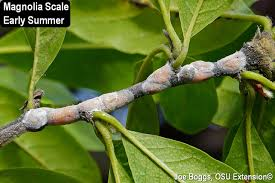Magnolia Scale Surge
- M.J. Design
- Aug 26, 2024
- 1 min read
Updated: Aug 27, 2024
This year, magnolia scale has made an unusually early appearance, with large infestations showing up on properties. Typically, these pests don’t become a noticeable issue until late August or early September, but this season's early onset may be linked to the dry conditions experienced last fall.
Magnolia scale, a sap-sucking insect, can cause significant damage to magnolia trees by weakening them and making them more susceptible to other issues. The pests appear as waxy, white or grayish lumps on the branches and foliage, and their presence can lead to the decline in the overall health of the tree.
The dry fall of 2023 might have contributed to the accelerated development of these scales. Stress from drought conditions can weaken trees, making them more vulnerable to infestations.
How to Manage Magnolia Scale:
Regular monitoring: Check your magnolias regularly, particularly if you noticed scale issues last year. Early detection is key to managing the problem effectively.
Physical removal: For a small-scale infestation, you can manually remove the pests. Gently scrub the affected areas with a soft brush or sponge to dislodge the scales.
Ahlum & Arbor Tree Preservation treatments: Apply treatments during the scale emergent season when the scales are most vulnerable and follow up as necessary to manage any reoccurrence.
Tree health: Ensure your magnolias are well-watered and fertilized to help them recover from any stress and better resist pests.
By staying vigilant and acting early, you can help your magnolia trees stay healthy and beautiful throughout the season. Keep an eye out, and don’t let the magnolia scale get the upper hand!





Comments